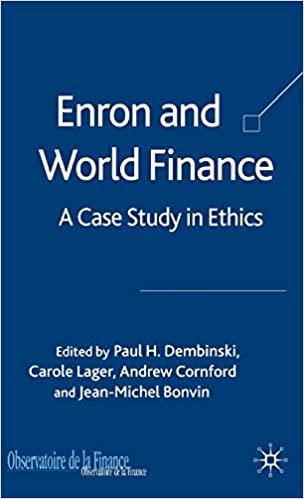Question
PRAIRIE HOME STORES Terrence Breezeway ,the CEO of Prairie Home Stores,wondered what retirement would be like.It was almost 20 days to the day his uncle
PRAIRIE HOME STORES
Terrence Breezeway ,the CEO of Prairie Home Stores,wondered what retirement would be like.It was almost 20 days to the day his uncle Jacob Breezeway ,Praire Homes founder ,had asked him to take the responsibility for managing the company.Now it was time to spend more time for riding and fishing at the old Lazy Beta Ranch.
Under Mr.Breezeways leadership Prairie Home had grown slowly but steadily and was solidly profitable.(Table 7.6 shows earnings,dividends and book asset values for the last 5 years). Most of the companys supermarkets were modernized and its brand name well known.
Mr.Breezeway was proud of this record although he wished Prairie could have grown more rapidly.He had passed up several opportunities to build new stores in adjacent countries. Prairie Home was a family firm.Its common stock was distributed among 15 grandchildren and nephews of Breezeway,most of whom had come to depend on generous regular dividends.The committment to a high dividend payout had reduced the earnings available for reinvestment and constrained growth.
Mr.Breezeway believed that the time had come to take Prairie Home public.Once its shares were traded in the public market,the Breezeway descendants who needed or wanted more cash to spend could sell off part of their holdings.Others with more interest in the business could hold on to their shares and be rewarded by higher future earnings and stock prices.
If Praririe did go public, what should its shares sell for?Mr.Breezeway worried that shares would be sold,either by Breezeway family members or by the company itself at too low a price.One relative was about to accept a private offer for $200,the current book value per share,but Mr .Breezeway convinced the seller to wait.
Prairie Homes value depended not just on its current book value or earnings but on its future prospects which were good.One financial projection ( Top panel of Table 7.7) called for growth of earnings of 100% by 2026.This plan would require reinvestment of all earnings from 2021 to 2024.After that , the company could resume its normal dividend payout and growth rate.Mr.Breezeway believed that this plan was feasible.
Before retiring, he had to decide whether to recommend the company to go public and before that decision he had to know what the company was worth.So,he asked Mrs Firewater,the companys CFO, to prepare a formal report to the stockholders,valuing the company on the assumption that its shares were publicly traded.
Required:
1.Prepare two valuations (as of 2020)
(a)one asuming a rapid expansion (as in top Panel of Table 7.7 ) and
(b) another just projecting past growth (as in bottom panel of Table 7.7).
Mr.Breezeway said that 15%, Prarire Homes usual return on book equity,sounded right to him but he read in an article that investors in rural supermarket chains,with risks similar to Prairie Home Stores,expected to earn about 11% on average.
(c) What rate of return should Mrs.Firewater use in stock valuation? Why?
2.Is the shareholder right is selling his stock for $200 per share to a private investor?
3. Which growth policy is better for Prairie Homes?
4. Does high rate of growth always result in higher value? Explain using data above.
5.Show effect of growth on value using different growth scenarios for Prarire Homes.
6. What are some factors that affect the value of a firm that plans an IPO?
7.Would value set for a company differ in an IPO versus a merger ? Why?
Table 7.6 Financial Data for Prairie Home Stores , 2016-2020
2016 2017 2018 2019 2020
Book Value,start of the year $62.7 66.1 69.0 73.9 76.5
Earnings 9.7 9.5 11.8 11.0 11.2
Dividends 6.3 6.6 6.9 7.4 7.7
Retained earnings 3.4 2.9 4.9 2.6 3.5
Book Value,end of year 66.1 69.0 73.9 76.5 80.0
Notes:
Prairie Home had 400,000 common shares
The companys policy is to pay cash dividend equal to 10% of the start of year book value
Step by Step Solution
There are 3 Steps involved in it
Step: 1

Get Instant Access to Expert-Tailored Solutions
See step-by-step solutions with expert insights and AI powered tools for academic success
Step: 2

Step: 3

Ace Your Homework with AI
Get the answers you need in no time with our AI-driven, step-by-step assistance
Get Started


